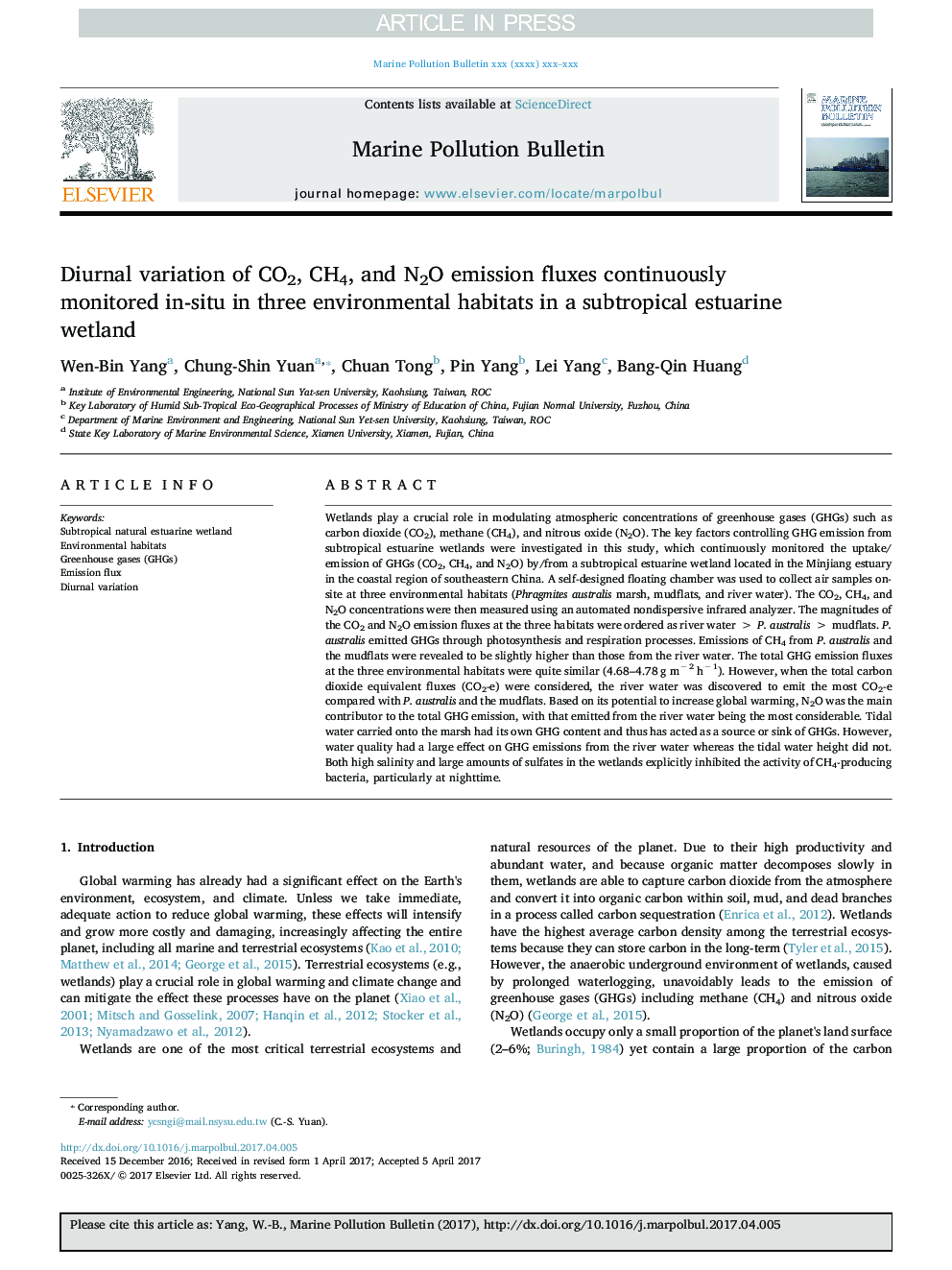| کد مقاله | کد نشریه | سال انتشار | مقاله انگلیسی | نسخه تمام متن |
|---|---|---|---|---|
| 5757955 | 1412737 | 2017 | 10 صفحه PDF | دانلود رایگان |
عنوان انگلیسی مقاله ISI
Diurnal variation of CO2, CH4, and N2O emission fluxes continuously monitored in-situ in three environmental habitats in a subtropical estuarine wetland
دانلود مقاله + سفارش ترجمه
دانلود مقاله ISI انگلیسی
رایگان برای ایرانیان
موضوعات مرتبط
مهندسی و علوم پایه
علوم زمین و سیارات
اقیانوس شناسی
پیش نمایش صفحه اول مقاله

چکیده انگلیسی
Wetlands play a crucial role in modulating atmospheric concentrations of greenhouse gases (GHGs) such as carbon dioxide (CO2), methane (CH4), and nitrous oxide (N2O). The key factors controlling GHG emission from subtropical estuarine wetlands were investigated in this study, which continuously monitored the uptake/emission of GHGs (CO2, CH4, and N2O) by/from a subtropical estuarine wetland located in the Minjiang estuary in the coastal region of southeastern China. A self-designed floating chamber was used to collect air samples on-site at three environmental habitats (Phragmites australis marsh, mudflats, and river water). The CO2, CH4, and N2O concentrations were then measured using an automated nondispersive infrared analyzer. The magnitudes of the CO2 and N2O emission fluxes at the three habitats were ordered as river water > P. australis > mudflats. P. australis emitted GHGs through photosynthesis and respiration processes. Emissions of CH4 from P. australis and the mudflats were revealed to be slightly higher than those from the river water. The total GHG emission fluxes at the three environmental habitats were quite similar (4.68-4.78 g mâ 2 hâ 1). However, when the total carbon dioxide equivalent fluxes (CO2-e) were considered, the river water was discovered to emit the most CO2-e compared with P. australis and the mudflats. Based on its potential to increase global warming, N2O was the main contributor to the total GHG emission, with that emitted from the river water being the most considerable. Tidal water carried onto the marsh had its own GHG content and thus has acted as a source or sink of GHGs. However, water quality had a large effect on GHG emissions from the river water whereas the tidal water height did not. Both high salinity and large amounts of sulfates in the wetlands explicitly inhibited the activity of CH4-producing bacteria, particularly at nighttime.
ناشر
Database: Elsevier - ScienceDirect (ساینس دایرکت)
Journal: Marine Pollution Bulletin - Volume 119, Issue 1, 15 June 2017, Pages 289-298
Journal: Marine Pollution Bulletin - Volume 119, Issue 1, 15 June 2017, Pages 289-298
نویسندگان
Wen-Bin Yang, Chung-Shin Yuan, Chuan Tong, Pin Yang, Lei Yang, Bang-Qin Huang,